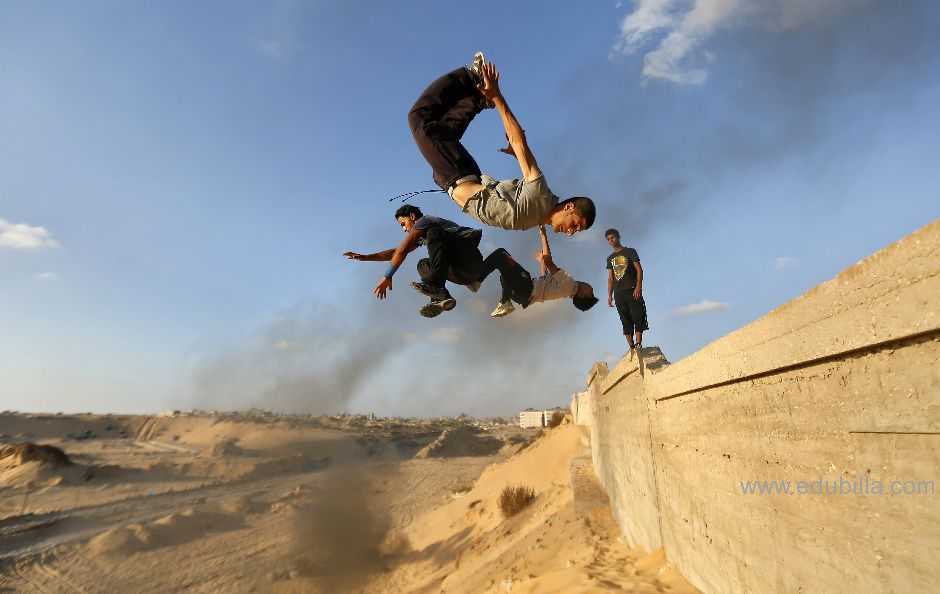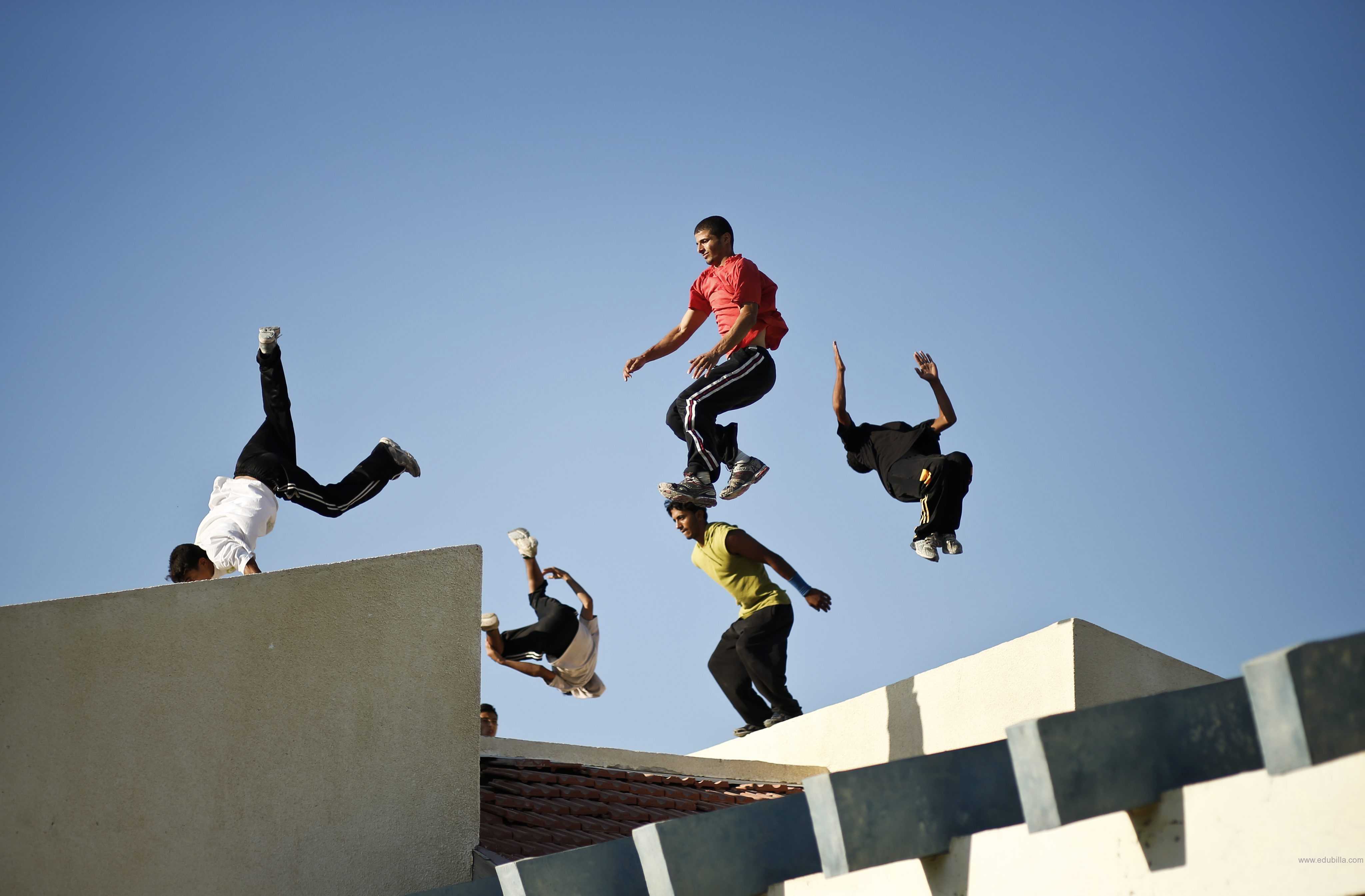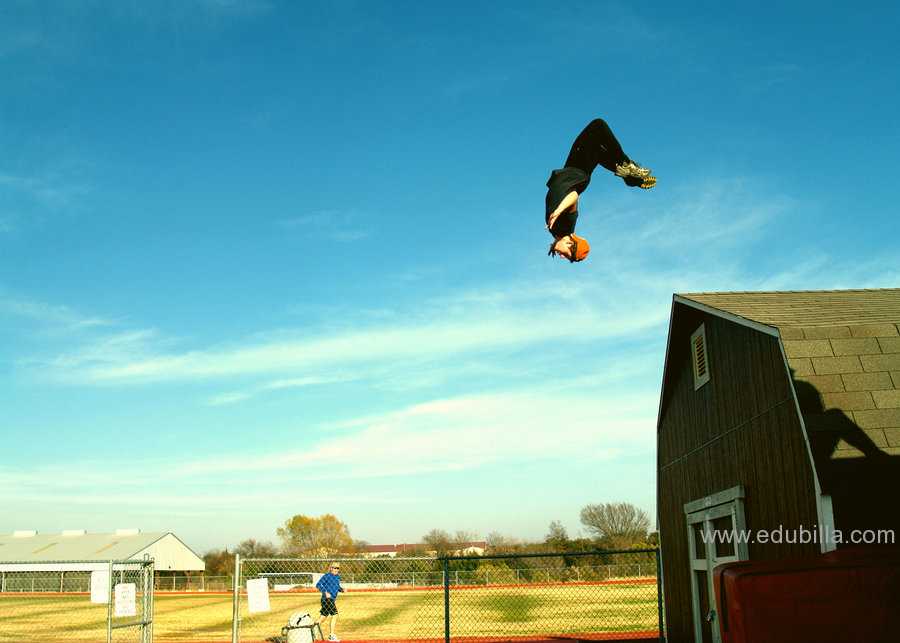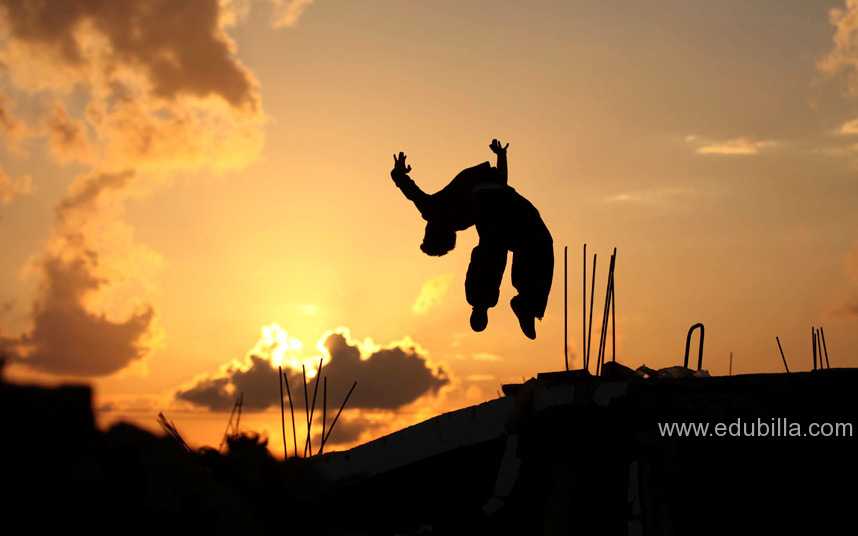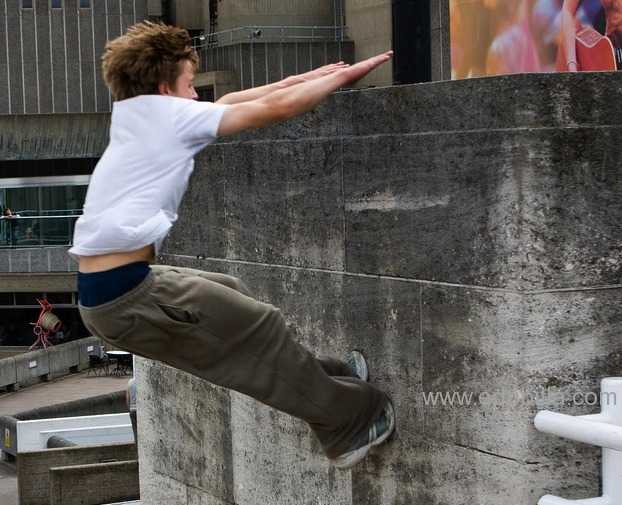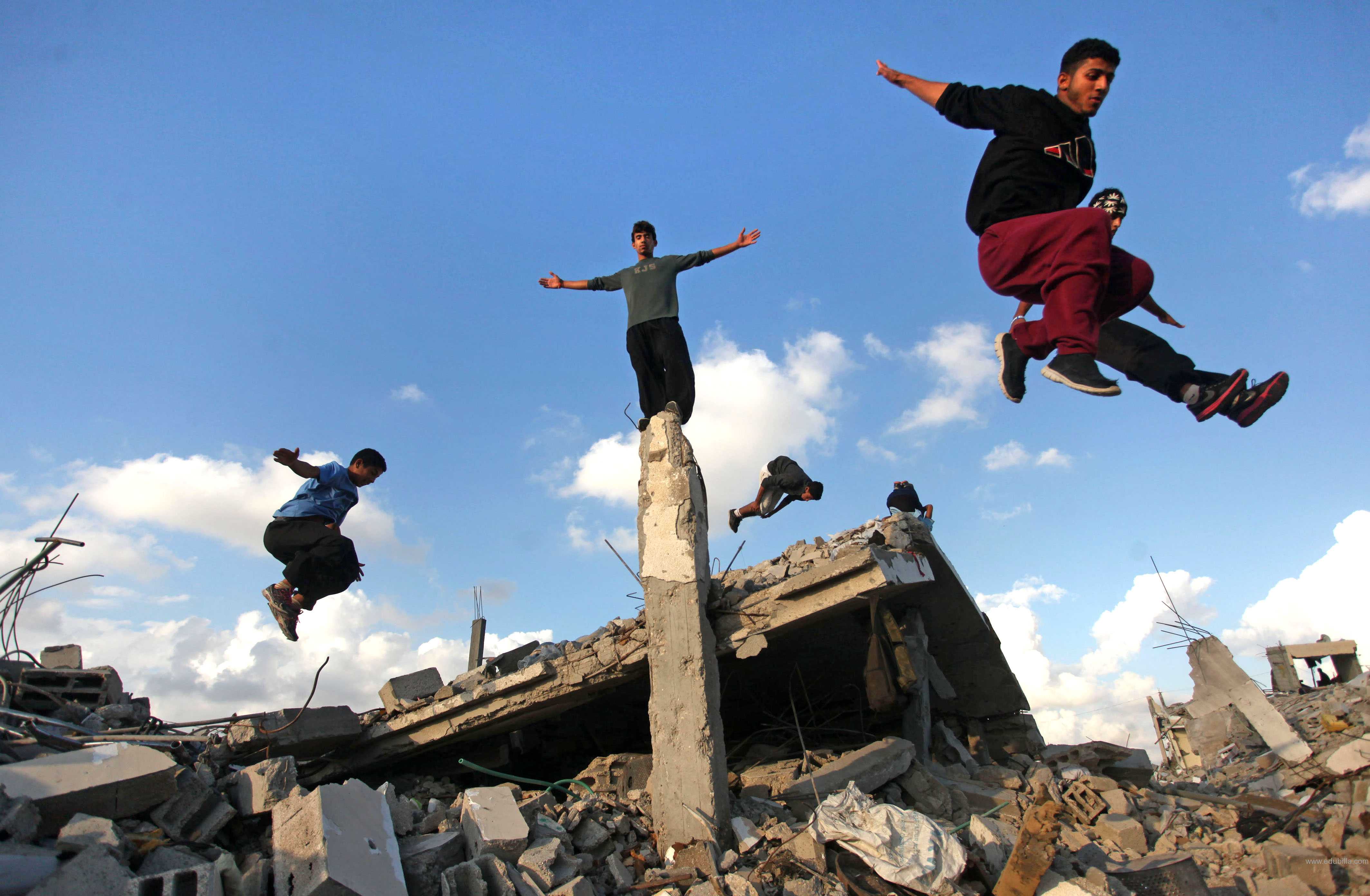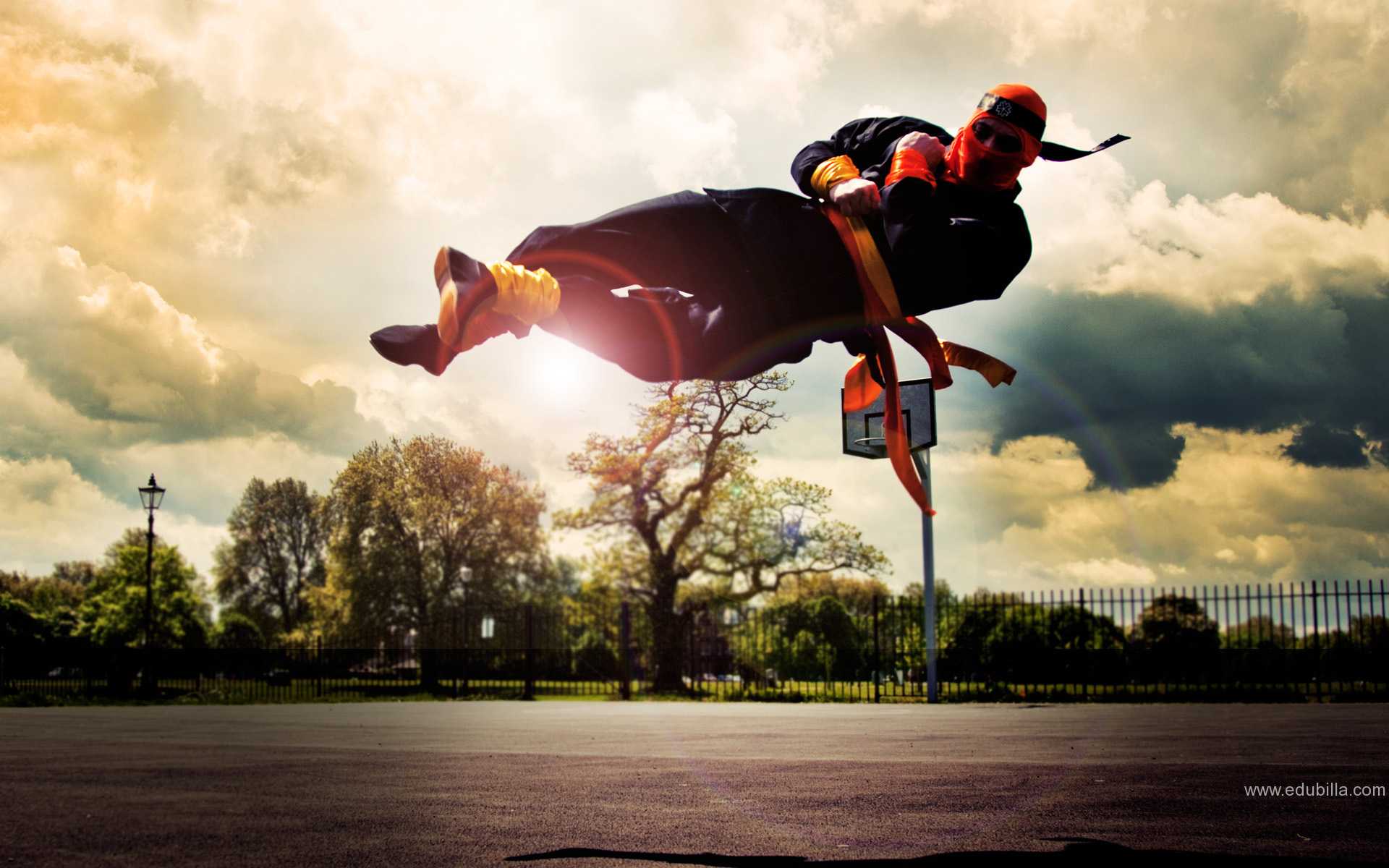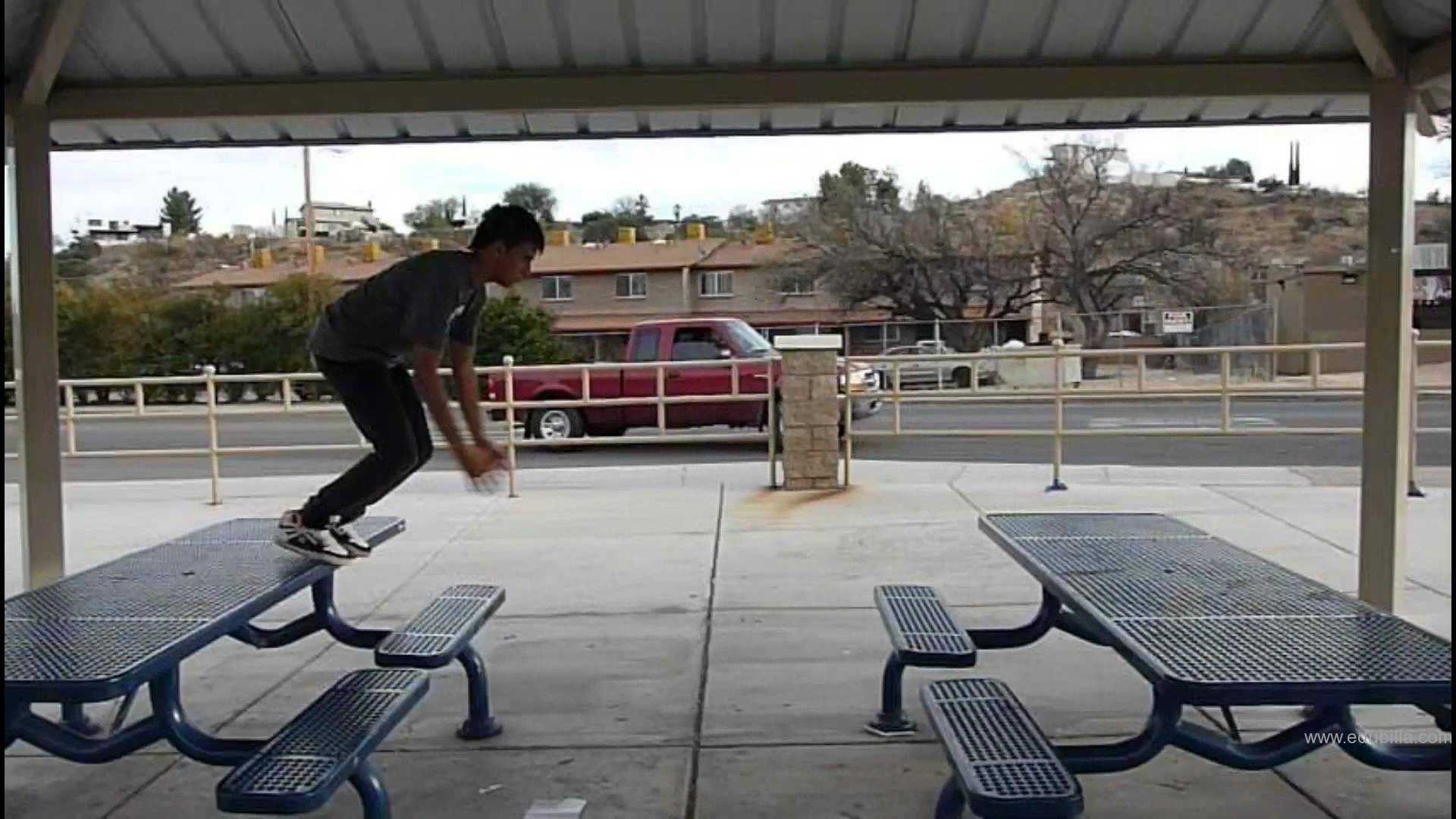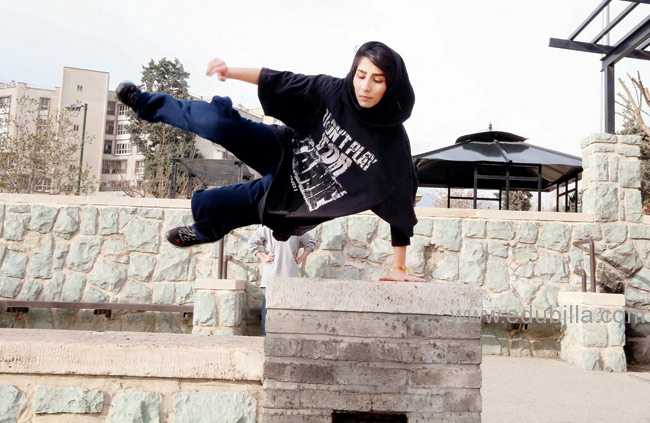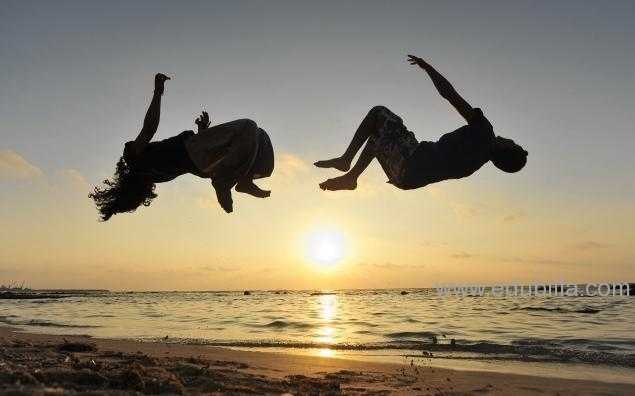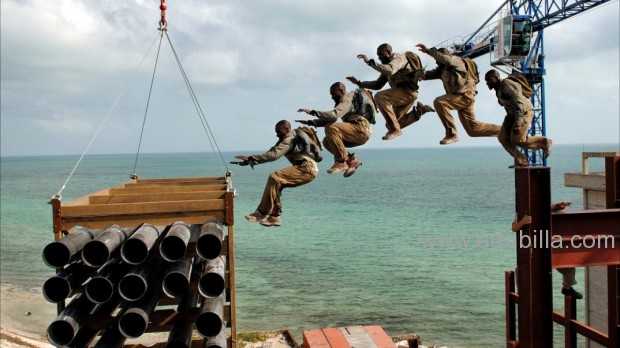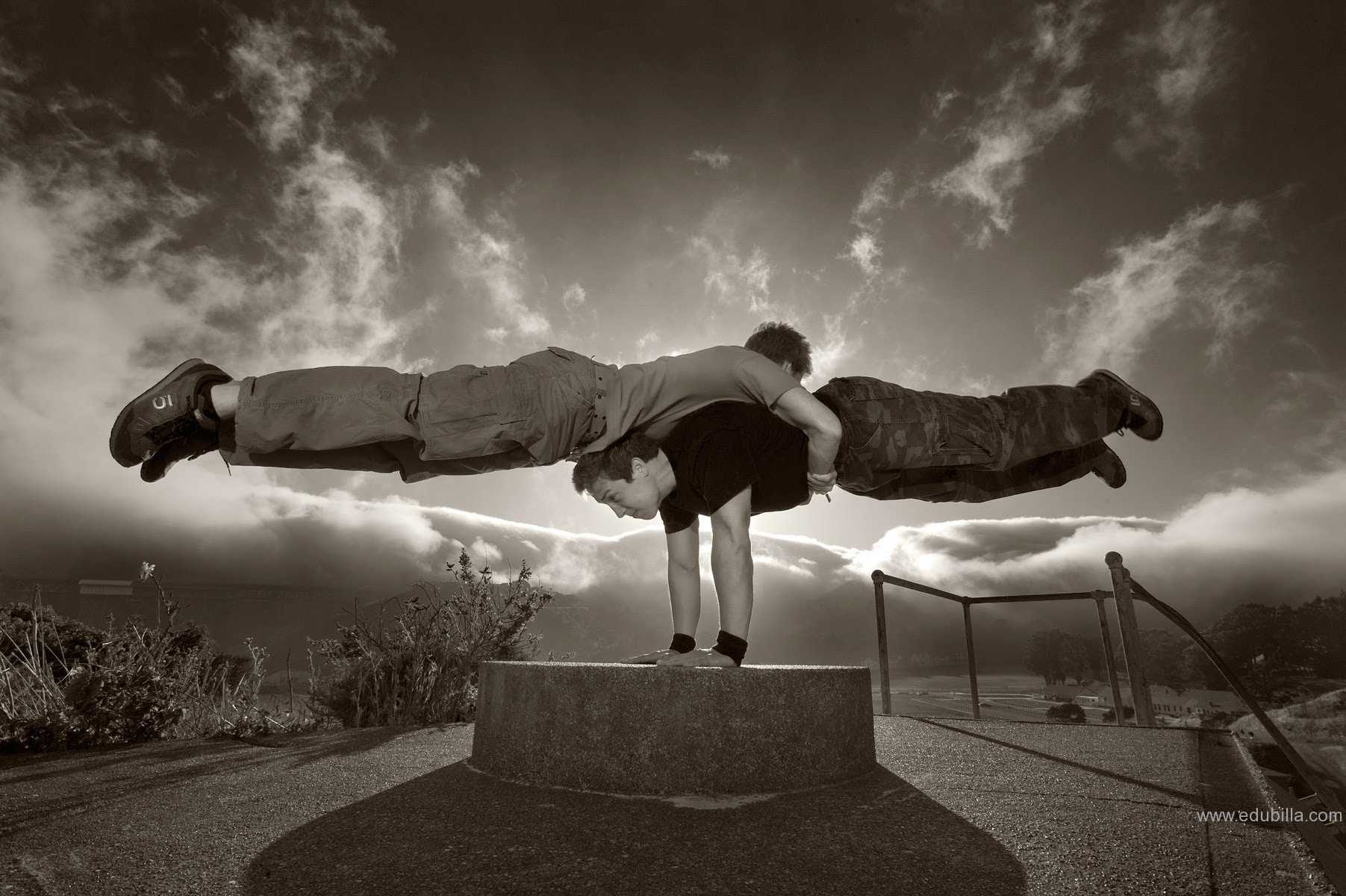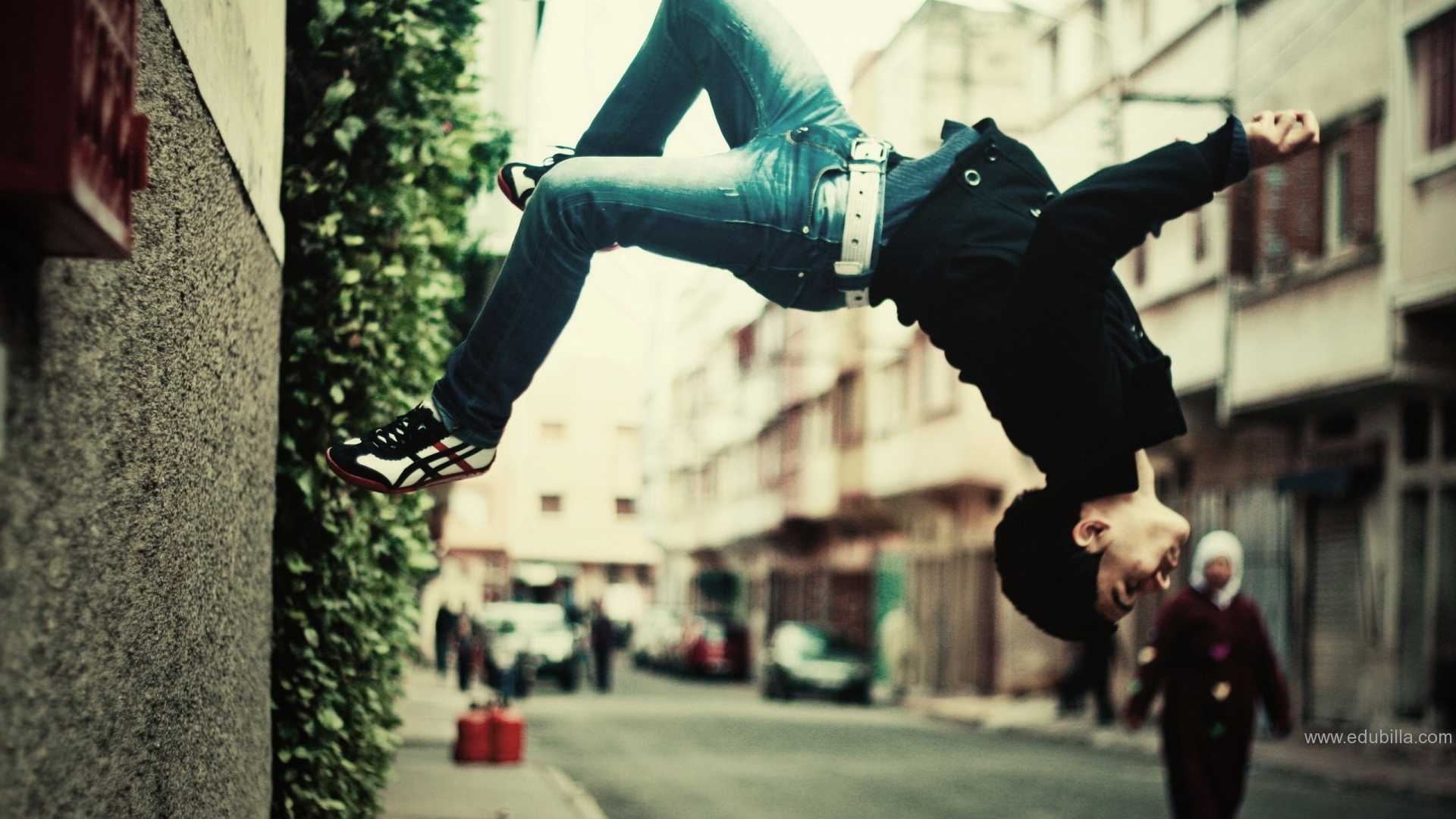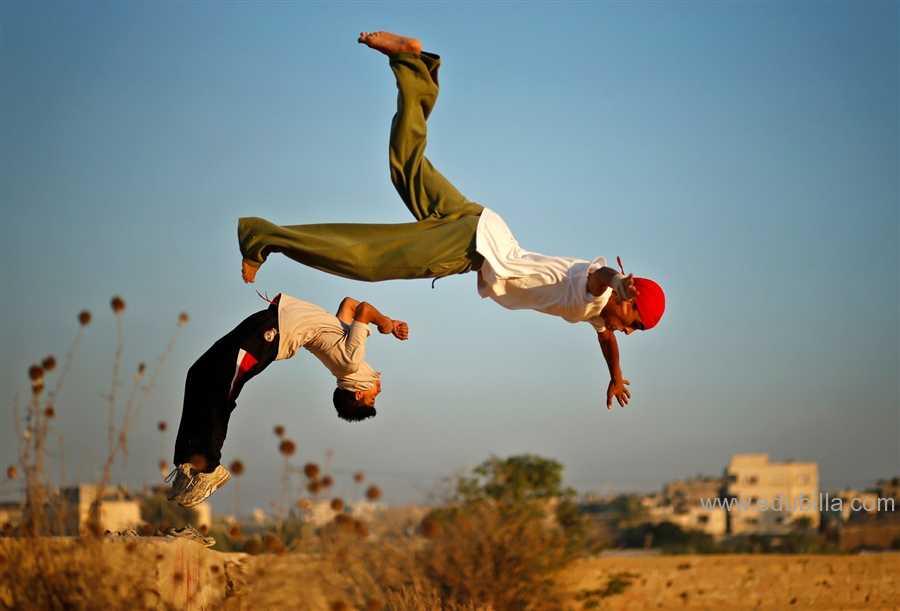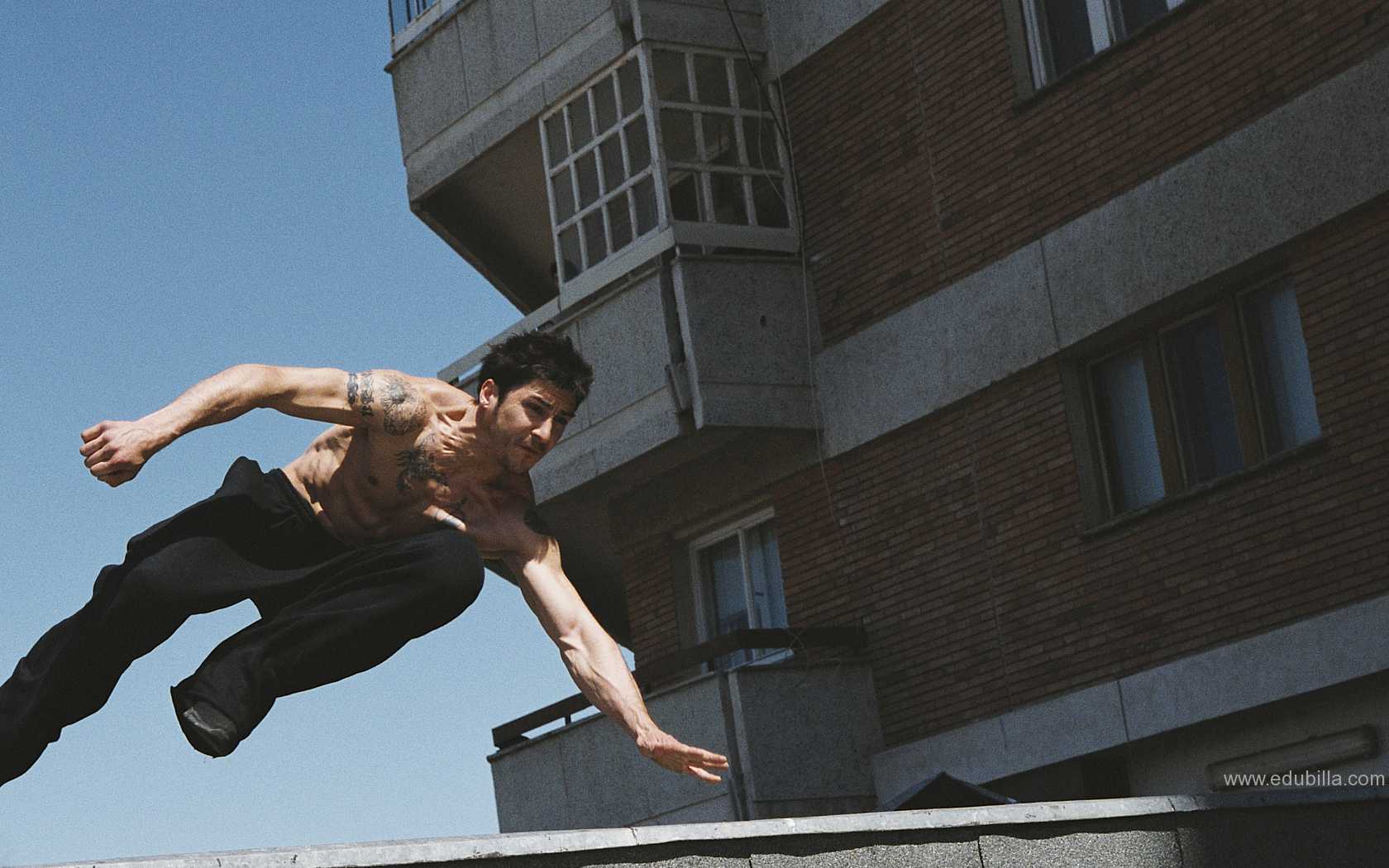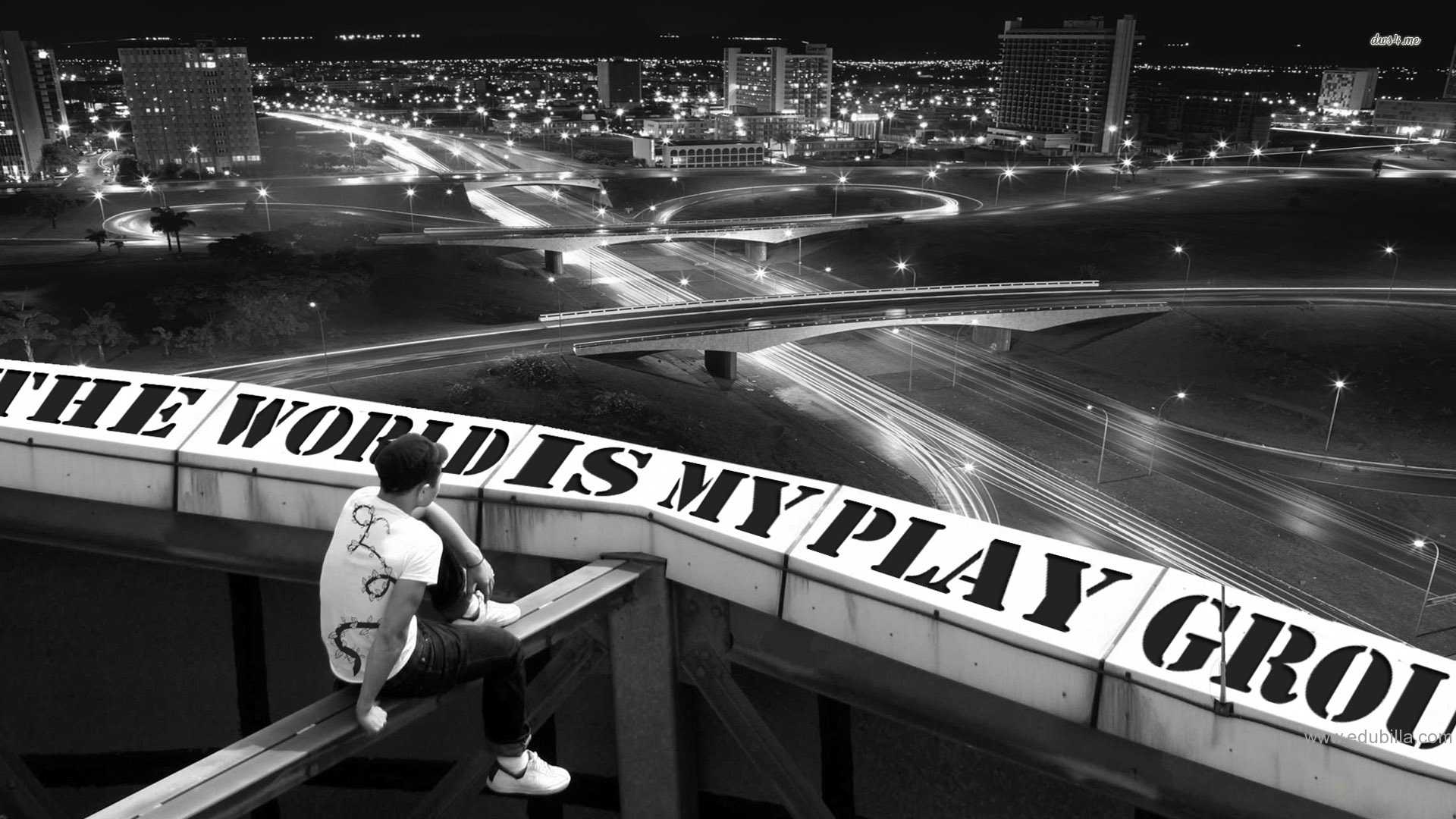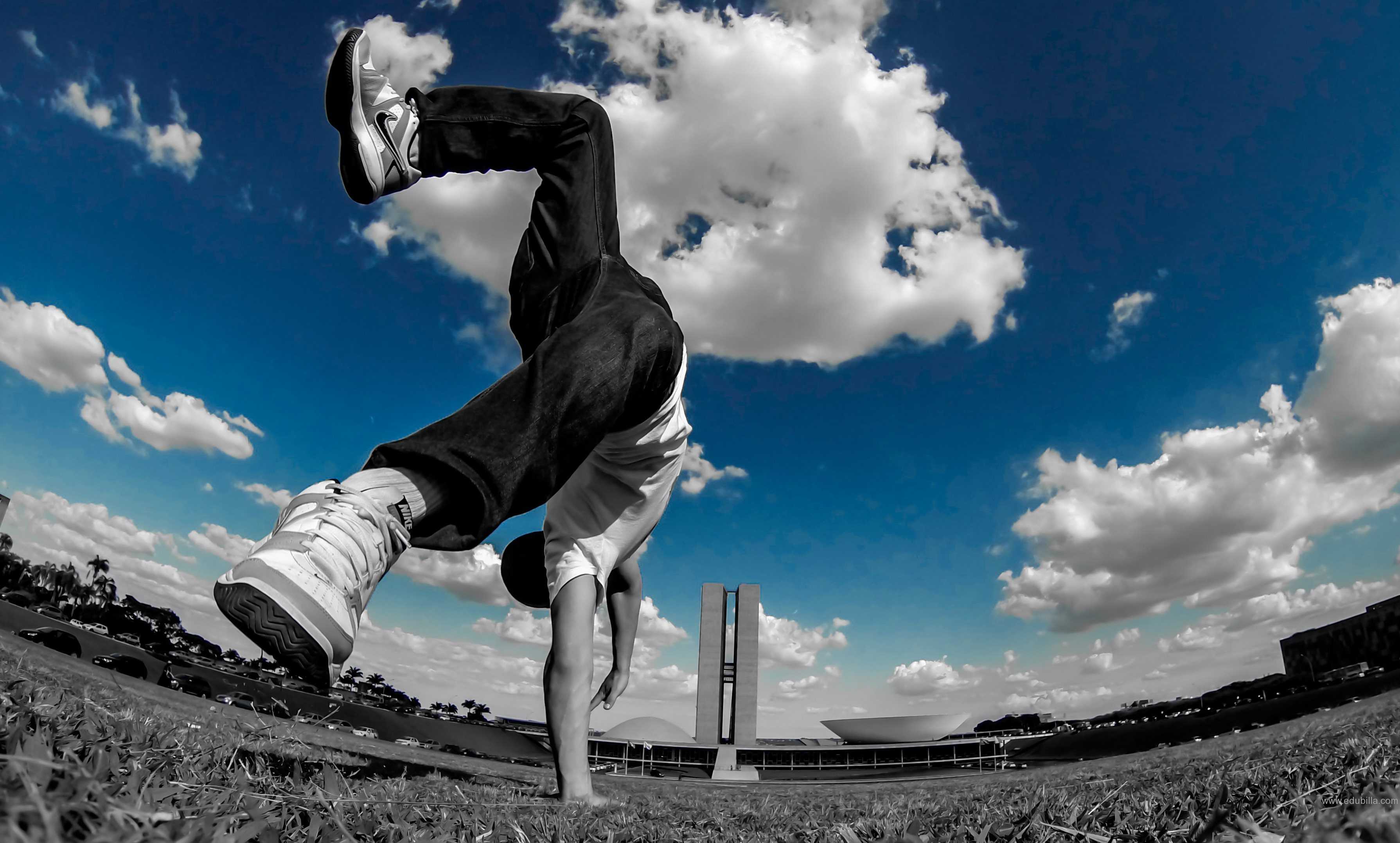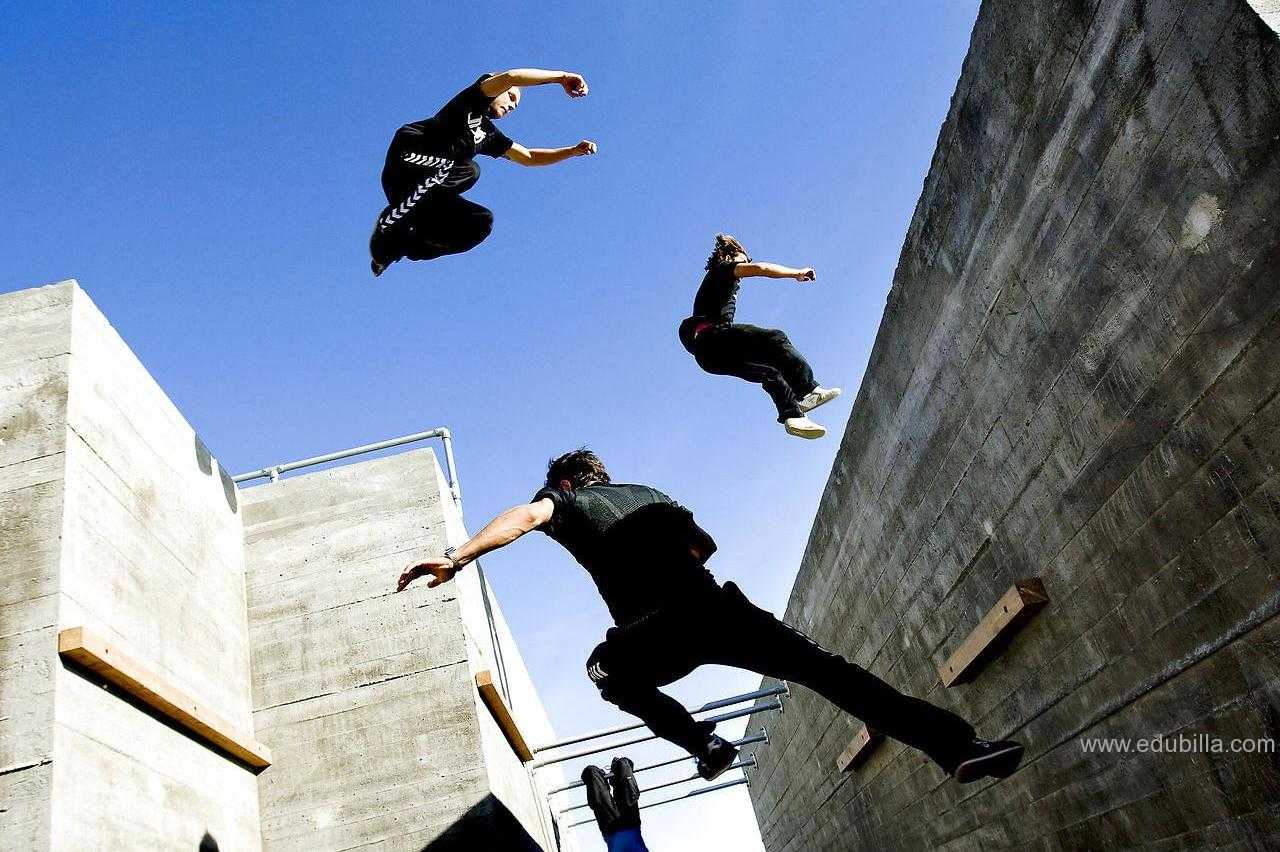
Overview Of Parkour
Parkour is a training discipline using movement that developed from military obstacle course training.Practitioners aim to get from one point to another in a complex environment, without assistive equipment and in the fastest and most efficient way possible. Parkour includes running, climbing, swinging, vaulting, jumping, rolling, quadrupedal movement, and other movements as deemed most suitable for the situation.Parkour's development from military training gives it some aspects of a non-combative martial art.
Popularity:
In the late 1990s, after David's brother sent pictures and video to a French TV programme, the popularity of parkour began to increase. A series of television programmes in various countries subsequently featured video footage of the group, and as the popularity increased, they began to get more and more offers. Eventually, the original group split apart to pursue different goals, some staying with the discipline and others leaving. The number of practitioners in total though kept on increasing and parkour's popularity began to spread around the globe through television, feature film and increasing use of online video-sharing methods.
Practice Movement:
While there is no official list of "moves" in parkour, the style in which practitioners move often sets them apart from others,and there are a number of movements considered fundamental.[5] Some examples of common movements are:
- Vaulting over obstacles
- Jumping and landing accurately with the feet on small or narrow obstacles
- Jumping and landing feet-first on a vertical surface, catching the horizontal top with the hands[55]
- Using a rolling motion to help absorb impacts from larger drops
- Running towards a high wall and then jumping and pushing off the wall with a foot to reach the top of the wall
- Moving from a position hanging from a wall-top or ledge, to standing on the top or over to the other side
Military training:
Although parkour itself grew out of military obstacle-course training,[4][26] it has become a separate discipline. After the attention that parkour received following the 2006 film Casino Royale, military forces around the world began looking for ways to incorporate elements from parkour into military training. The British Royal Marines hired parkour athletes to train their members.Colorado Parkour began a project to introduce elements from parkour into the U.S. militaryand some members of the United States Marine Corps have tried parkour.
Game Rules
1. Progressive Training is Key: Walk First, Then Run!
These days people only upload videos on youtube to show really advance moves. The thing is, as a beginner, Just Admire these moves as a start. Always start from basic and slowly develop your mind and physical self. There are no shortcuts to Parkour, it takes years of training to get where people like David Belle and Damien Walters are now. So take it slow.
2. Two Brains Are Better Than One
When attempting to Parkour, regardless whether you're doing basics or intermediate, always have someone who has done Parkour for at least 2 - 3 months CONSISTENTLY every week. They key word here is CONSISTENTLY. It's always better to get a second opinion before trying out something new in the urban jungle. You know, to analyze the situation, and to see if it's really feasible. I prefer to have at least 2 others (that means a total of 3 of us) around when I try something new.
3. Dressing Can Bring The Best, and The Worst Of You.
Yes, dressing up, or rather suiting up for Parkour is essential at the beginning. Always wear something light and that doesn't restrict your movement (eg. jeans and jackets are not advisable) Of course, one might say a traceur should be able to Parkour in anything they wear, but that can come later. Again, Progressive Training Is Key, start of with light stuff and with shoes, and later on once your basics and foundation are right, you can try in other outfits like a business suit with blazer and all that. Some even train barefooted for the challenge.
4. Plan Before You Leap
Parkour is an individual sport. The difference with other sports like soccer and basketball is you're interacting with inanimate objects. Which means you can predict what might happen. (Unless you've reach the level where u do moving cars) Soccer and basketball involves other players which makes it harder for you to predict what might happen and cause more serious injury. So plan before your leap, there's always a safer way around the obstacles you're facing.
5. Parkour After You've Completely Healed.
And in the case where you really got injured. Only start practicing again once you've completely healed. This is to prevent overusing your injured part and causing more injury to it than it already is. Further more, when you practice while you're still injured, you tend to avoid using the injured area more to avoid pain. This will form bad habits which you will find hard to correct later. So take it slow, and be patient. Parkour is not an over night thing. It takes years of conditioning.
Equipments Need For Parkour
Parkour is practised without equipment of any kind. Practitioners normally train wearing light, non restrictive casual clothing.Traceurs who wear gloves are the exception—bare hands are considered better for grip and tactile feedback.Light running shoes with good grip and flexibility are encouraged. Practitioners often use minimalist shoes, sometimes as a progression to bare feet. Barefoot training is done by some for movement competency without gear—as David Belle noted, "bare feet are the best shoes."Various sport-shoes manufacturers have developed shoes specifically for parkour and freerunning.Many other companies around the world have started offering products targeted at parkour.
History Of Parkour
The sport originally termed Art du Deplacement, now also often referred to as Parkour or Freerunning, was founded in France in the 1980s by a group of nine young men.
- The founders are David Belle, Yann Hnautra, Chau Belle, Laurent Piemontesi, Sebastien Foucan, Guylain N’Guba Boyeke, Charles Perriere, Malik Diouf and Williams Belle.
- The term ‘Parkour’ was first introduced by David Belle in 1998. Parkour derives from the French word Parcours meaning ‘route’ or ‘course’
- The term ‘Freerunning’ was the creation of Guillaume Pelletier, a representative of a group of French practitioners involved in the production of a Channel 4 documentary, Jump London, in 2003. This term was used in order to communicate this amazing new sport to an English-speaking audience.
Parkour History timeline
1902 – A volcano erupted on the Caribbean island of Martinique. A French naval officer, Lt. George Hebert, coordinated the rescue of over 700 people from the scene. As he watched people move, well or badly, around the obstacles in their path he concluded that, to be of real value, skill must be combined with courage and altruism. The term “Etre fort pour être utile” – “Be strong to be useful” is used for the first time.
Roots
- 1905 – George Herbert published his book La Methode Naturelle, which started being used by the French military.
- 1939 – Â Raymond Belle, a French national was born to a French doctor of the colonial army and a Vietnamese mother in Indochina.
- 1946 – During the Indochina conflict, Raymond Belle was sent to military school where he trained using the Methode Naturelle, developed by Herbert.
- 1954 – Raymond Belle returned to France to continue his military education.
- 1958 – Raymond Belle was recruited by the Paris firefighters due to his impressive physical abilities.
- 1973 – David Belle was born. Raised by his maternal grandfather, Gilbert Kitten (former sergeant-major of the Parisian sapeurs-pompiers military fire service), David was impressed by tales of heroism, and developed from a young age a passion for anything to do with action.
Development:
- 1984 – David Belle moved to Lisses, a suburb of Paris in France, where he became closer to his father and started training Parcours, learned from him. He made close friends with a group of teenagers with similar physical passions who began training with him. They would later become known as the Yamakasi
- 1988 – The group’s training develops into a cohesive discipline called “L’art du deplacement” for the first time in Lisses, France.
- 1993 – Sebastien Foucan started naming the movements they performed, for the first time. (source)
Mainstream
- 1996 – The group was featured in an interview by a french television and the Yamakasi term is used publicly for the first time to describe the team.
- 1997 – Sebastien Foucan and David Belle leave The Yamakasi group to find their own way, separately. (source)
- 1998 – David Belle founded the group “Tracers”, with the practitioners called traceurs. This was the moment the term Parkour was invented by David Belle and Hubert Koundé. (source)
- 2001 – The Yamakasi movie is aired coining the term L’art Du Deplacement as the discipline the protagonists use.
- 2002 – David appeared in a British TV commercial called “Rush Hour” after which a UK scene intuitively consisting of just a few traceurs was formed.
- 2003 – British filmmaker Mike Christie’s JUMP LONDON is launched with the first mention of Free running which was meant to describe Parkour to Americans, but ended up becoming Sebastien Foucan’s separate discipline.
- 2004 – David Belle re-appeared in French film DISTRICT B-13, which gained something of a cult following outside of France.
- 2005 – The follow-up documentary JUMP BRITAIN is aired.
- 2005 – The sudden game-changing arrival of YouTube, allowed free runners all over the world to post their videos and share their latest discoveries.
- 2005 – American Parkour was founded by Mark Toorock.
- 2005 – Parkour Generations America started.
- 2006 – Sebastian Foucan’s appearance in the opening chase scene of the James Bond film CASINO ROYALE. Audiences in the US started to realize that something new and really exciting was afoot.
- 2006 – The Madonna CONFESSIONS Tour and video further established Parkour in the public consciousness, with Sebastian, Levi Meeuwenberg, Victor Lopez and Oleg Vorslav as featured performers.
- 2007 – May, a campaign was started on the, now defunct, Parkour.NET to preserve Parkour’s philosophy of non-competitive training.
Evolution
- 2007 – October, The RED BULL ART OF MOTION in Vienna was the first major competition around Parkour and Freerunning.
- 2008 – September, Â in London, the, now rebranded, Urban Freeflow team, in partnership with Barclaycard, staged the first World Freerun Championship.
- 2010 – ParkourTrain.NET parkour blog is launched to fill a gap in news and content about Parkour and Freerunning.
- 2012 – July, Flow channel is launched on Youtube, the first Parkour and Freerunning content creator on YT.
Origin Of Parkour
The earliest form of Parkour in history was defined by Georges Hebert, a naval officer in the French army who served both during World War I and World War II. Because he was a soldier, he often traveled to Africa, where he was impressed by the efficient, flowing athletic movements of most of the African tribes he visited. After he had returned to France, he began to develop a method of natural movement for officers serving in the military, in which both men and women were trained to move efficiently and fluently around a wide variety of obstacles in their path. The discipline called “méthode naturelle” started to be regularly taught in the military, setting the stage for the later development of Parkour.
Georges Hébert:
Georges Hébert was a pioneering French physical educator, theorist and instructor.
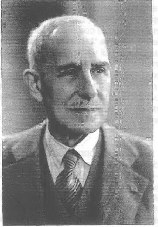
Hébert was among the earliest proponents of the "Parkour" or obstacle course form of physical training, which is now standard in the military and has led to the development of civilian fitness trails and confidence courses.
Hébert's teachings have been an important influence on the emergence of Parkour as a training discipline in its own right. Also, in the first decade of the 21st century, the French physical education instructor Erwan Le Corre took inspiration from Hébert's "méthode naturelle" ("natural method") and has expanded on the training to form a system of natural movement which he has named "MovNat." .
The inventor of Parkour:
The most well-known founding figure of Parkour is David Belle, who learned about the méthode naturelle discipline by his father back in the 1980s.
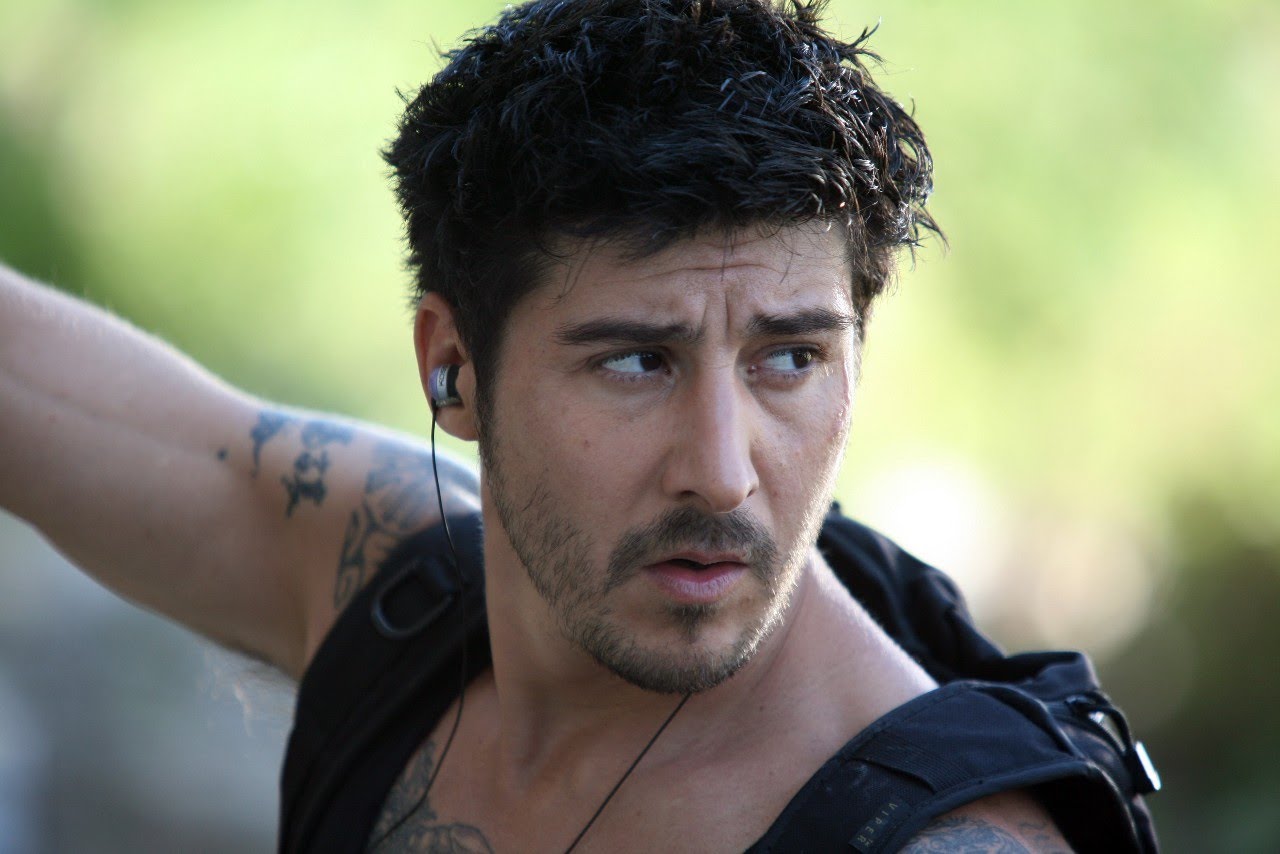
The group he trained in came up with the term “parkour,” which came from “parcours du combattant“, an obstacle course used to train soldiers of the French military. Parkour is also acknowledged as “l’art du déplacement“, which French for “the art of displacement,” and some people just call it “PK.” A person who practices Parkour is generally known as a traceur, or a traceuse if she is female.
The Yamakasi:
David initially trained on his own, and after moving to Lisses found other young men who had similar desires, and they began to train together.[1] The group eventually included David Belle, Sébastien Foucan, Châu Belle Dinh, Williams Belle, Yann Hnautra, Laurent Piemontesi, Guylain N'Guba Boyeke, Malik Diouf, and Charles Perriére.
Etymology:
The word parkour derives from parcours du combattant, the classic obstacle-course method of military training proposed by Georges Hébert.Raymond Belle used the term "le parcours" to encompass all of his training including climbing, jumping, running, balancing, and the other methods he undertook in his personal athletic advancement.His son, David, further developed his father's methods and achieved success as a stuntman, and one day on a film set showed his 'Speed Air Man' video to Hubert Koundé. Koundé suggested he change the "c" of "parcours" to a "k" because it was stronger and more dynamic, and to remove the silent "s" for the same reason, forming "parkour".
A practitioner of parkour is often called a traceur, with the feminine form being traceuse.They are nouns derived from the French verb tracer, which normally means "to trace", as in "tracing a path", in reference to drawing.The verb tracer used familiarly means: "to buck up".The term traceur was originally the name of a parkour group headed by David Belle which included Sébastien Foucan and Stephane Vigroux.
A jam refers to a meeting of traceurs, involving training lasting anywhere from hours to several days, often with people from different cities. The first parkour jam was organized in July 2002 by Romain Drouet, with a dozen people including Sébastien Foucan and Stephane Vigroux.
Governing Bodies
World Freerunning and Parkour Federation:
The World Freerunning Parkour Federation (WFPF) is an international federation or organization that was established in 2007. Its focus is to bring together patrons of parkour and freerunning and aims to bring the sport and philosophy to the mainstream audience.
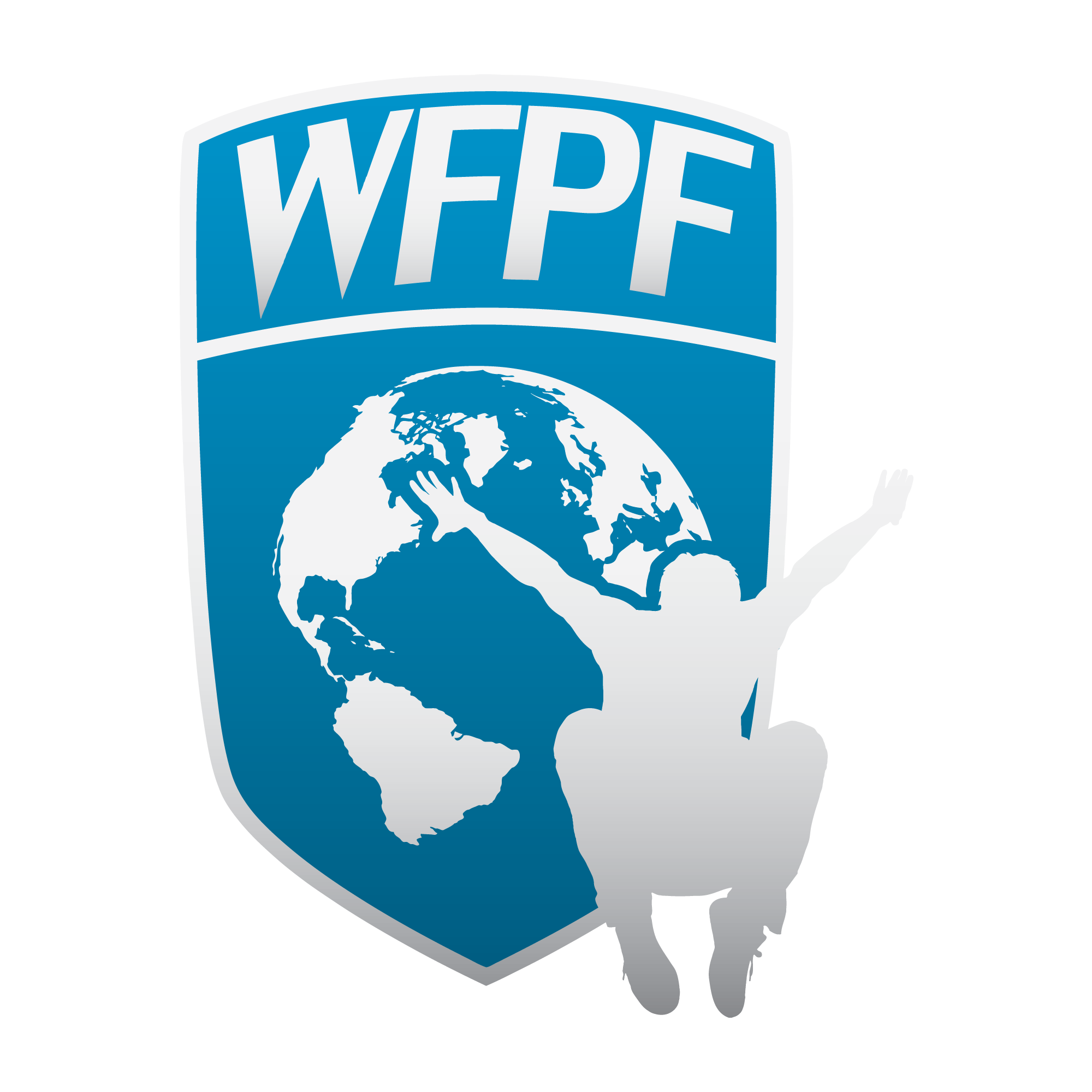
History of WFPF:
The World Freerunning Parkour Federation (WFPF) was founded in January 2007 as a partnership between Ruff Magic Entertainment, a New Jersey limited liability company, and eight of the world’s most respected Parkour and Freerunning athletes. The athletes, Daniel Ilabaca, Ryan Doyle, Tim Shieff, Oleg Vorslav, Victor Lopez, Gabriel Nunez, Paul Darnell and Richard King, and the company principals, Victor Bevine, David Thompson and production partner Francis Lyons came together with the stated purpose of bringing the sport and philosophy of Parkour to mainstream American audiences through television and other media and live formats. Other member athletes of the WFPF include Brian Orosco, Miguel Southee Jr., King David, Michael Turner and Daniel Arroyo from the U.S. Pip Andersen, Philip Doyle, Ben Jenkin from the UK, Marcus Gustafsson and Filip Ljungberg of Sweden, and Justin "Jet" Sheaffer from the U.S.
MTV:
The WFPF partnered with MTV to develop and produce MTV’S ULTIMATE PARKOUR CHALLENGE, a one-hour competitive format special starring WFPF member athletes Daniel Ilabaca, Ryan Doyle, Tim Shieff, Pip Andersen, Brian Orosco, King David, Michael Turner and Daniel Arroyo.
On May 6, 2010, the first of 12 live episodes of Ultimate Parkour Challenge aired on MTV. Each week the competitors were put in a new environment to compete, with the first episode taking place on the historic Queen Mary Hotel, in Long Beach, California.
WFPF management:
According to the WFPF website, the Ruff Magic principals, Victor Bevine and David Thompson have over thirty years combined experience working in youth development, having directed and developed arts and intervention programs for at-risk youth. Francis Lyons is the Emmy Award-winning executive producer of MTV’s hit series MADE, and is a partner at One Louder Productions.
Parkour UK
Established by some of the most experienced practitioners and coaches of the discipline of parkour/freerunning in the world and the City of Westminster, Parkour UK is the National Governing Body for the rapidly growing discipline and works in partnership with various organisations and other agencies to develop and spread parkour across the UK.
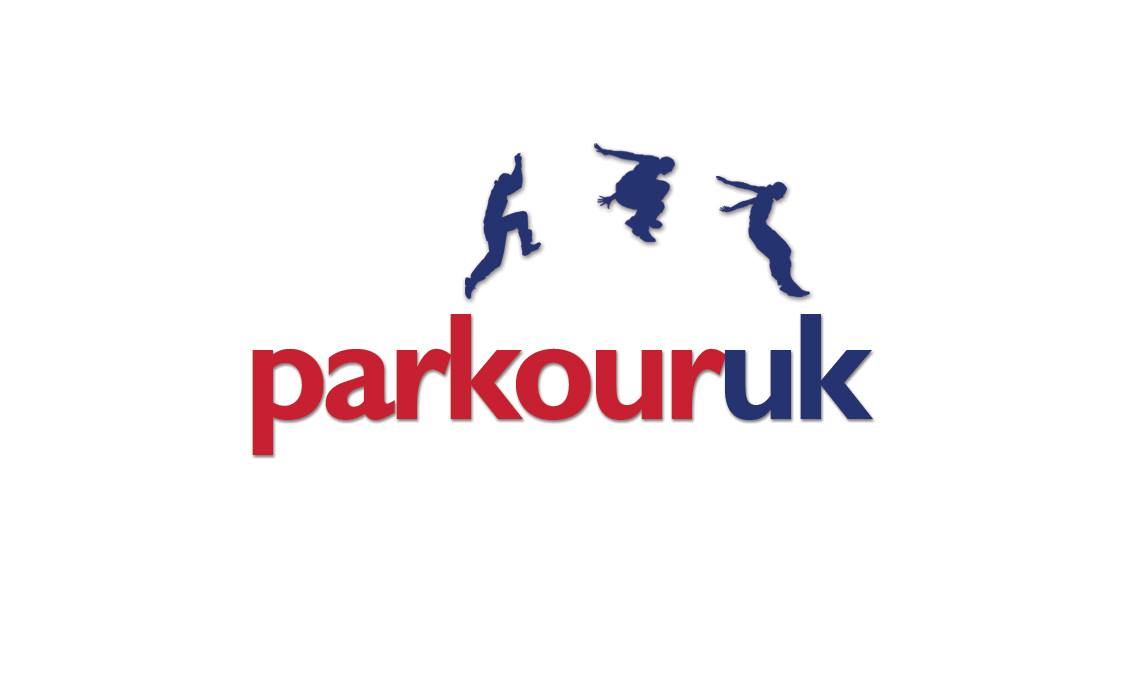
Parkour UK is a member of the Sport and Recreation Alliance and works closely with, and is supported by, the Association for Physical Education (afPE) and the Youth Sport Trust (YST). In addition to this Parkour UK is supported by Sports Coach UK and works in partnership with 1st4sport Qualifications, who are the awarding body for our coaching qualifications.
Mission:
Parkour UK aims to support and develop parkour/freerunning in the UK, and to make the benefits of the sport accessible to any and all who want to learn. Parkour UK will always strive to maintain and improve the spirit of the sport/discipline.
Parkour UK’s work is overseen by the Board, which meets at regular intervals.
We aim to provide guidance, support and assistance on all levels to all practitioners of the sport/discipline, and to regulate and maintain the standards of the sport in the country. Parkour UK will oversee the development and management of the sport from grassroots to elite.
Awards Related To Parkour
Parkour UK Award:
Parkour UK Awards, Continuous Professional Development (CPD) & Qualifications have been developed in conjunction with a variety of award bodies including AQA, Sports Leaders UK, 1st4sport Qualifications & CYQ. Our qualifications are approved Skills Active, the relevant Sector Skills Council and are regulated by Ofqual.
1st4sport Level 1 Award in Coaching Parkour/Freerunning (QCF):
The 1st4sport Level 1 Award in Coaching Parkour/Freerunning (QCF) has been developed in partnership with Parkour UK, the governing body of sport for parkour/freerunning and is the first qualification on the parkour/freerunning coaching ladder. The qualification is designed to provide learners with an introduction to the practical and theoretical aspects of coaching parkour/freerunning. The foundation level of knowledge recognised in this qualification will enable them to develop an understanding of the safe, ethical and effective management and coaching of parkour/freerunning. Those who complete this Award will be able to assist other, more qualified coaches in delivering parkour/freerunning coaching sessions to participants of all ages.
Sample Documents Of Parkour
-Pele



